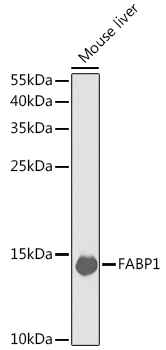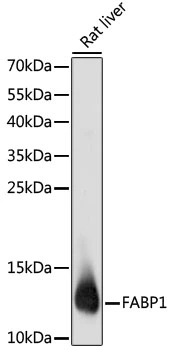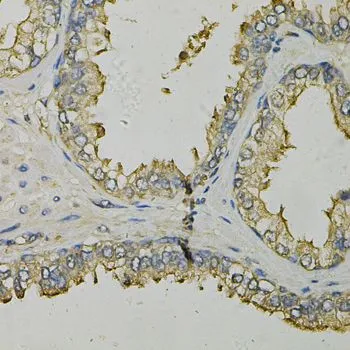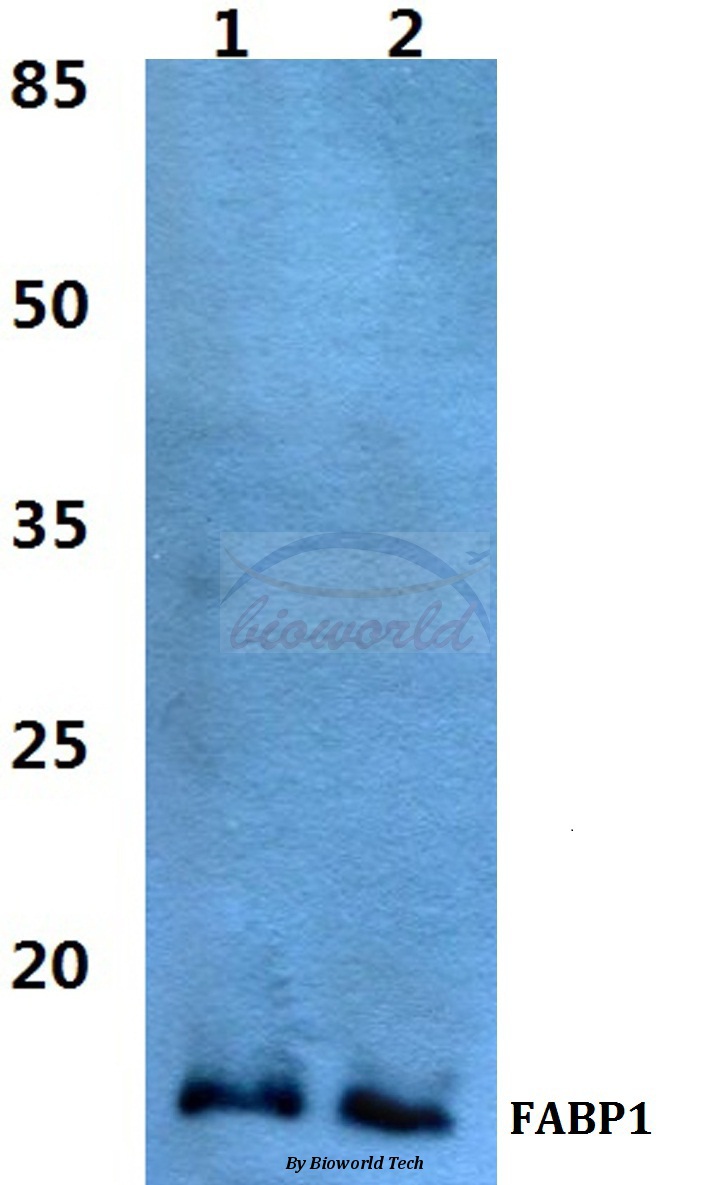
WB analysis of mouse liver tissue lysate using GTX32704 L-FABP antibody. Dilution : 1:1000 Loading : 25microg per lane
L-FABP antibody
GTX32704
ApplicationsImmunoFluorescence, Western Blot, ImmunoCytoChemistry, ImmunoHistoChemistry, ImmunoHistoChemistry Paraffin
Product group Antibodies
TargetFABP1
Overview
- SupplierGeneTex
- Product NameL-FABP antibody
- Delivery Days Customer9
- Application Supplier NoteWB: 1:500 - 1:2000. ICC/IF: 1:50 - 1:200. IHC-P: 1:50 - 1:200. *Optimal dilutions/concentrations should be determined by the researcher.Not tested in other applications.
- ApplicationsImmunoFluorescence, Western Blot, ImmunoCytoChemistry, ImmunoHistoChemistry, ImmunoHistoChemistry Paraffin
- CertificationResearch Use Only
- ClonalityPolyclonal
- ConjugateUnconjugated
- Gene ID2168
- Target nameFABP1
- Target descriptionfatty acid binding protein 1
- Target synonymsFABPL, L-FABP, fatty acid-binding protein, liver, fatty acid binding protein 1, liver, liver-type fatty acid-binding protein
- HostRabbit
- IsotypeIgG
- Protein IDP07148
- Protein NameFatty acid-binding protein, liver
- Scientific DescriptionThis gene encodes the fatty acid binding protein found in liver. Fatty acid binding proteins are a family of small, highly conserved, cytoplasmic proteins that bind long-chain fatty acids and other hydrophobic ligands. This protein and FABP6 (the ileal fatty acid binding protein) are also able to bind bile acids. It is thought that FABPs roles include fatty acid uptake, transport, and metabolism. [provided by RefSeq, Mar 2011]
- Storage Instruction-20°C or -80°C,2°C to 8°C
- UNSPSC12352203







